You can trust Cyclingnews
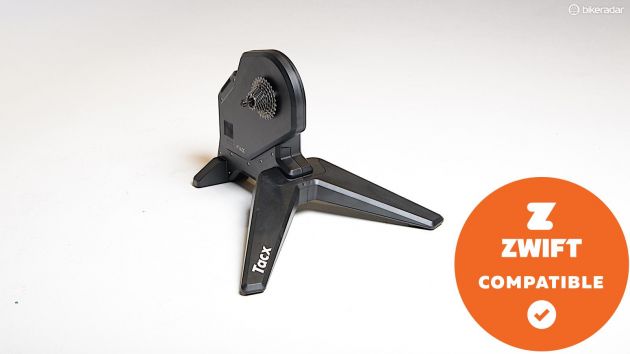
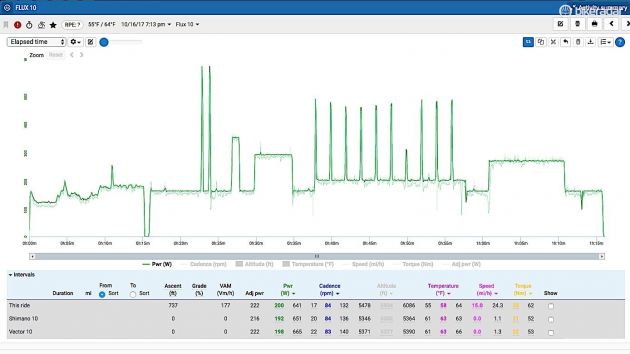
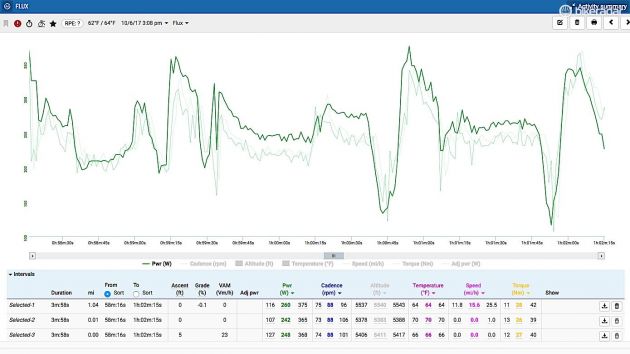
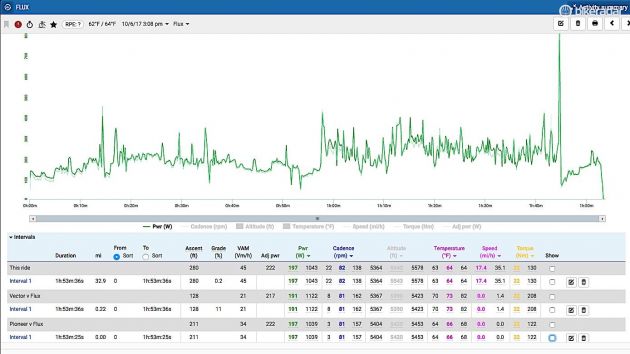
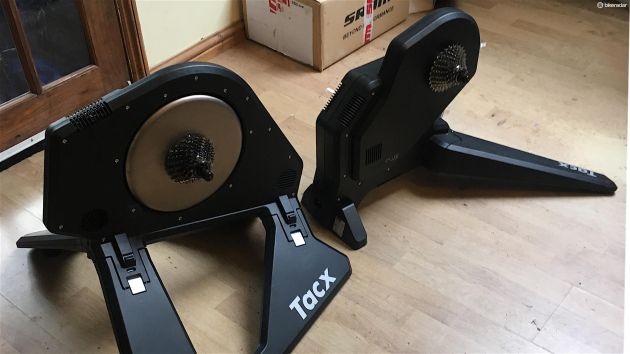
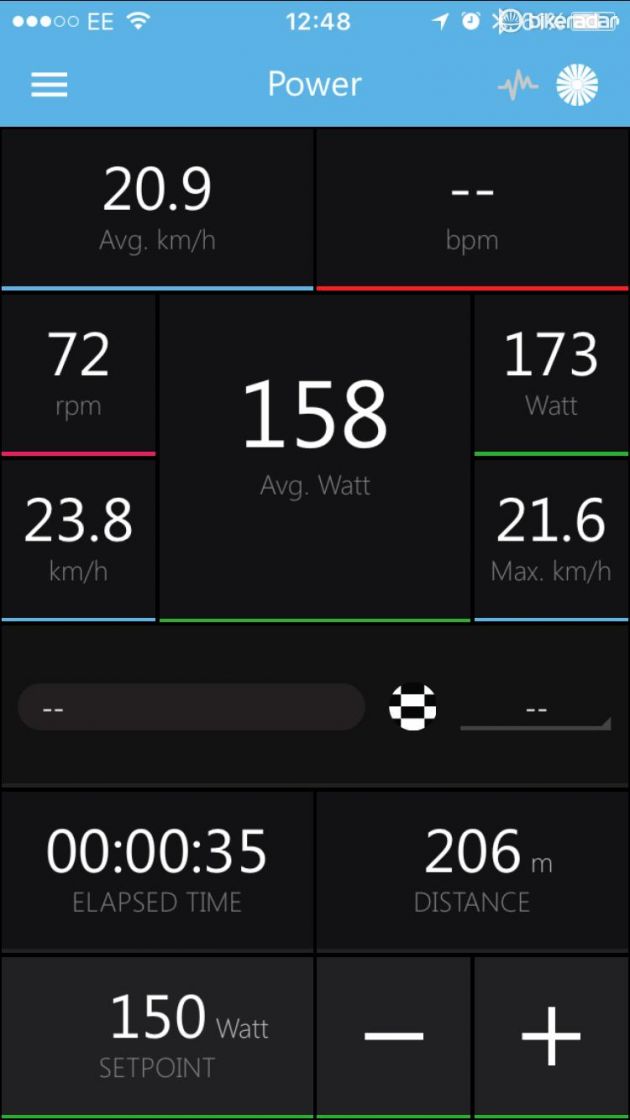
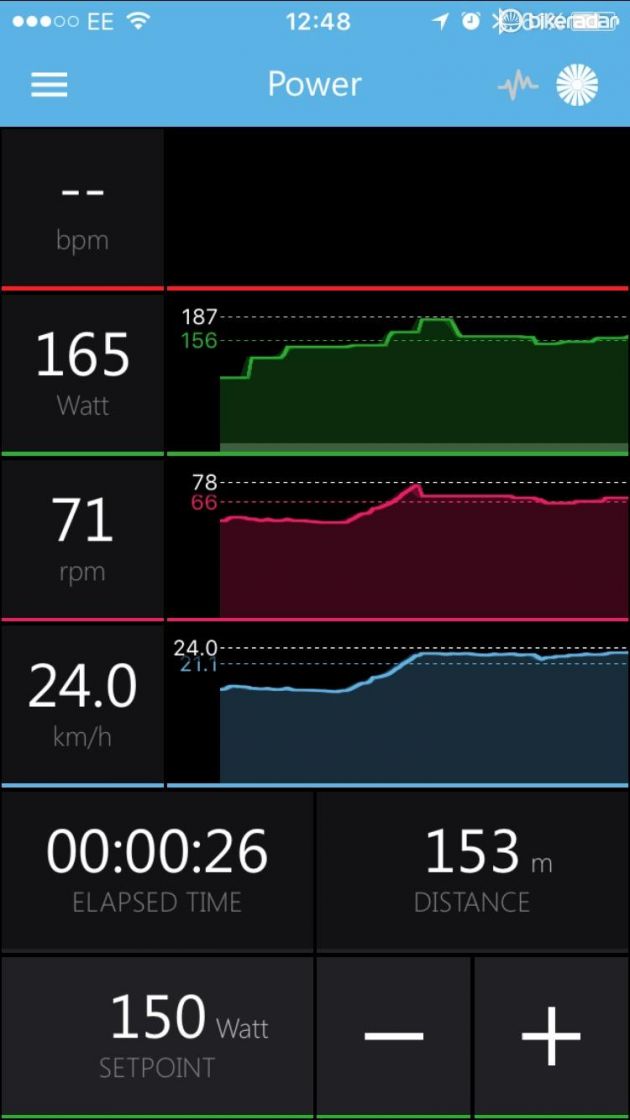
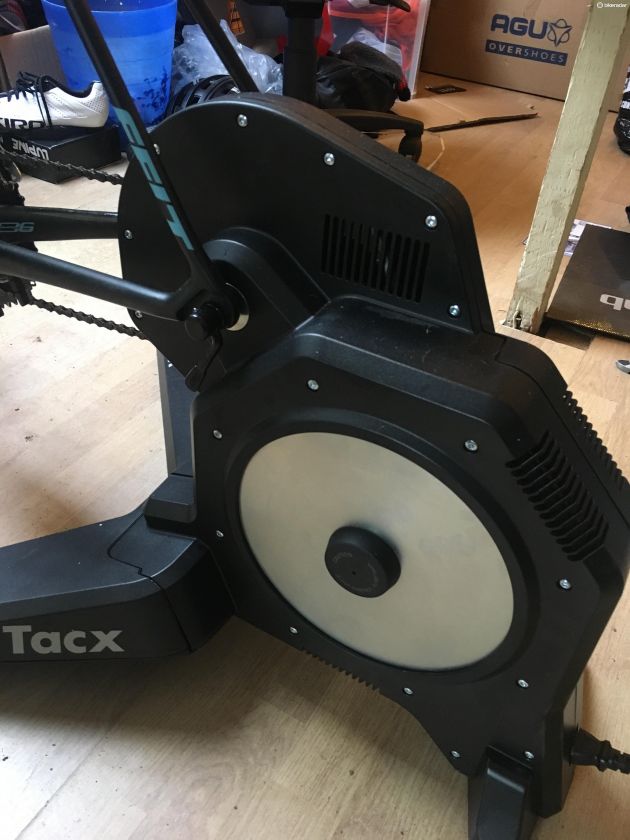
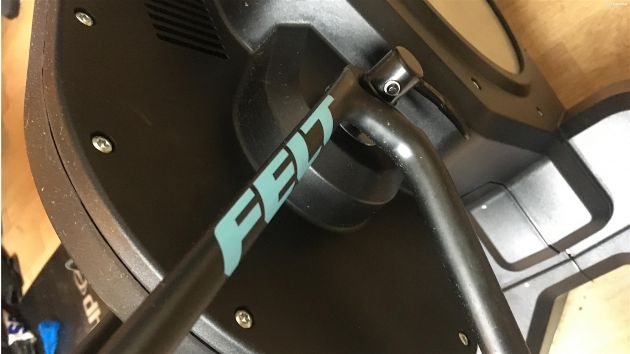
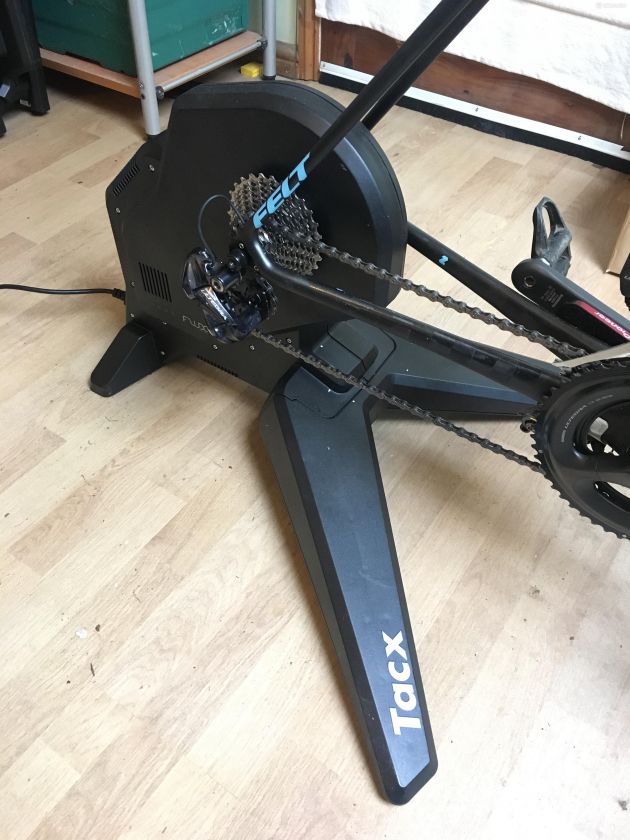
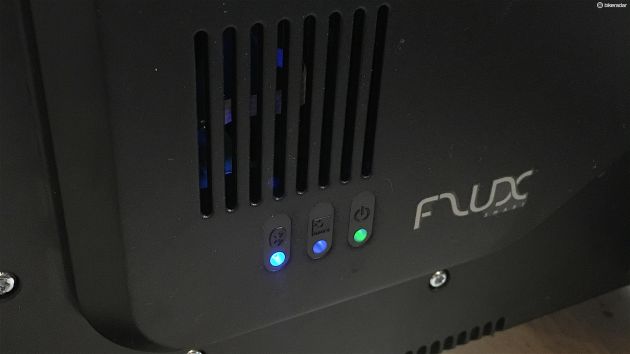
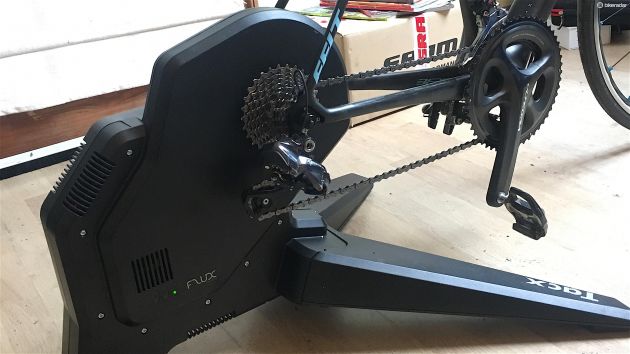
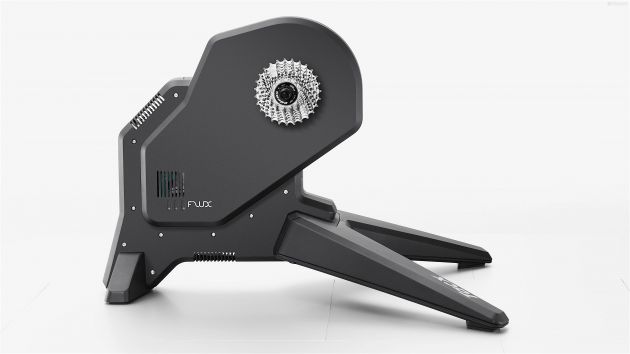
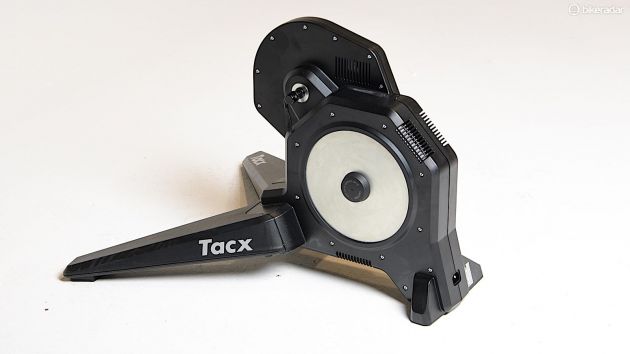
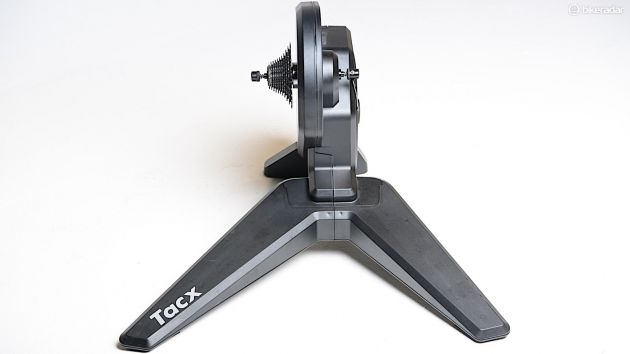
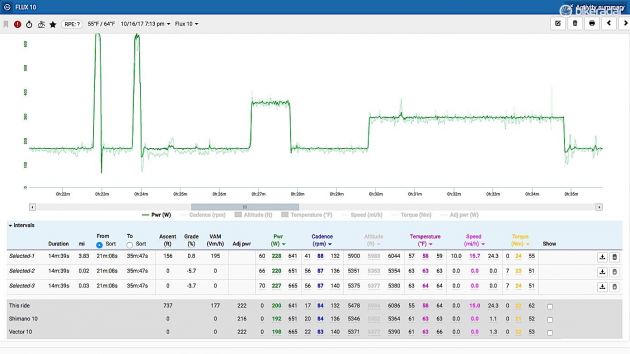
This article originally appeared on BikeRadar
- Highs: Stable, good power measurement, smooth riding feel
- Lows: No handle or fold-in legs, noise issues on some test models
- Buy if: You want a direct-drive smart trainer and have room for a model that doesn't fold down
The Tacx Flux Smart is the little sibling of the light-flashing, surface-rumbling Neo Smart direct-drive smart trainer. For about two-thirds the cost, the Flux Smart delivers interactive training and virtual riding with good power measurement but without the bells and whistles.
Tacx Flux Smart overview
- 7kg flywheel with electric-brake resistance controlled by third-party apps and software
- Receives and transmits info via Bluetooth and ANT+
- Works with quick-release and thru-axle bikes
- Integrated front tray tucks into frame when not in use
- 47lb / 21.3kg weight
- 70dB at 200w/80rpm, 86dB max
- Claimed accuracy of +/- 3%. I found that it read within 2% of pairs of power meters (Quarq/Stages, Shimano/Garmin, Pioneer/Garmin)
- Works with Zwift, TrainerRoad, Tacx's own software and other apps
Tacx Flux Smart assembly
Until the Elite Direto came on the market, the Tacx Flux Smart was the least expensive direct-drive smart trainer available. It achieved this with a few concessions to convenience and performance.
Inevitably there are some cost cutting features, such as a bolted crosspiece that creates a stable but bulky tripod stance rather than the folding, self-locking 'wings' of the Neo.
This makes it more cumbersome to store and transport without breaking it down, but remember that it costs less.
You'll have to be really throwing the bike around to get it rocking off its axis too and even then it doesn't threaten to topple — it's a tough, practical design that doesn't show oil or scuffs.

The tidy casing means fewer chainstay and disc brake clearance issues than some direct drive units. The black finish is practical too
It comes with fittings for 130mm or 135mm quick release frames, but you can get adaptor kits for 142x12mm thru-axles too. There's more chainstay clearance than a lot of direct drive units, although it's still best to check fit with your actual bike before you buy if you've got a squared chainstay end or flat mount discs.
Like the Neo, it uses the cunning multi-format Edco freehub body, which can take SRAM/Shimano and Campagnolo rather than needing a separate freehub body for the latter.
You will have to buy a cassette for it though, but that applies to most units apart from Wahoo's Kickr, and the low stance means you don't need a wheel block for a standard 700c wheeled bike.
Tacx Flux Smart ride impressions
The axle drives a 7kg flywheel inside the body, which results in slightly more noise and vibration in the form of a low rumbling hum. One BikeRadar tester experienced problems with one Tacx Smart trainer where the belt caused a loud rubbing noise and another where the flywheel seemed to be rubbing the case.
The Tacx Flux has a good ride feel in terms of keeping a gear turning smoothly if you're surfing threshold.
Eight magnets provide up to 1,500 watts of resistance and a simulated 10 percent gradient.

The legs bolt in place — which is great for stability but not so great for convenience
There are also a couple of seconds lag if you're doing power intervals with a big differential between recovery and peak power. Using it with Zwift there's also run-on 'shadow' as the flywheel keeps spinning and indicating power even if you're not pedaling, which is a bit weird but isn't exactly harmful.
There's no motor to physically drive the flywheel round and simulate descents though so it's not as richly interactive as Tacx's Neo or conventional wheel-on I-Genius Smart trainers.
What we really appreciate though is that it responds fast enough not to leave you with insurmountable resistance if you drop cadence or otherwise crack on a high wattage interval in Zwift, like you get with a Kickr. There's no slippage in resistance on steep segments either like we've had occasionally on Elite's Drivo.
Tacx Flux Smart power comparisons

Average power for Flux (in boldface) was 197w for this ride — identical to the Pioneer but above the Garmin Vector 3 (191w)
After doing an easy calibration with the Tacx app, the Flux Smart was tested against power meters from Pioneer, Shimano, Stages and Garmin, run in pairs.
The Tacx Flux tracked along nicely with the meters, with average power coming in at less than a two percent variance from the average of the pair of meters. We obviously can't guarantee that the power meters are 100 percent accurate, but we do feel confident in the general readings when two meters consistently track together, which is why we test smart trainers with a pair of known meters whenever possible.

Looking closer at a comparative ride with Pioneer and Garmin, the Flux (in boldface) shows its tendencies to read a little high and respond slowly to decreases in power output
As noted above, the Tacx Flux doesn't drop power readings as quickly as an actual power meter, which resulted in slightly higher ( 10w) readings over a section where power spiked and then backed off.
Click through the gallery above for more power comparison graphs.

When doing a controlled workout, the Flux Smart dutifully holds the prescribed power, as determined by Zwift, TrainerRoad or another app
Tacx Flux Smart vs. the competition
Fold-down convenience, top-end virtual-gradient resistance and high-end construction are the primary compromises made compared to expensive models such as the Tacx Neo, Wahoo Kickr and CycleOps Hammer.
The noise issues that plagued one tester with two models are a little concerning, although Tacx replaced both of those.

The Flux doesn't fold up like its more expensive Neo sibling, but it's more compact overall
Power measurement seems to be quite reliable. Oddly, the Flux Smart seems to read a little bit higher than the Neo when tested against the same sets of meters.
The Flux Smart's main direct competition now is the Elite Direto, which we have found to be a better smart trainer to live with in that it is quieter at high power and has legs that fold in.
Tacx Flux Smart overall
The Flux Smart is now slightly outshined by the Elite Direto as the go-to sub-£800 / $1,000 direct-drive smart trainer. The Flux Smart remains a solid choice, but the noise issues experienced on two units are concerning.
The Flux Smart offers reliable power measurement and a smooth feel for virtual riding and training. It connects easily on ANT+ and Bluetooth to play well with Zwift and other apps.
The bolted-legs design is rock solid for riding, but does hamper your storage options a little.
BikeRadar verdict - 4/5
"A solid direct-drive smart trainer with good power measurement"